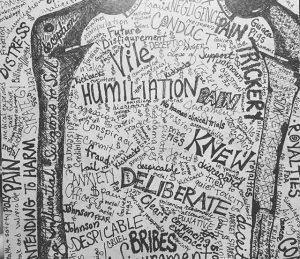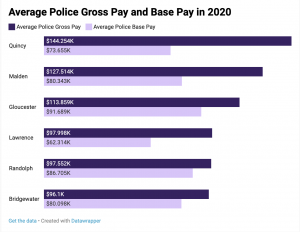VR technology used to improve access to mental health treatment
February 7, 2020
From Freud’s psychoanalysis to cognitive behavioral therapy (CBT), views on how best to treat mental health have changed and continue to develop as technology advances.
Traditional mental health treatments usually happen in person, often in a therapist’s office, limiting the extent to which patients can directly and immediately apply the therapist’s suggestions to real-life scenarios.
In Northeastern University’s College of Arts, Media and Design, visiting assistant professor Ray LC, and his graduate students Sai Teja Konda and Rudra Triveda are working on developing a virtual reality program called “PositiVR” that will help treat social anxiety by placing patients in simulated scenarios.
The user is dropped into a specific moment, like a work presentation or a job interview. They are then able to play-out these anxiety-inducing events in the game and practice techniques to lower their anxiety levels. Patients are on the receiving end of positive social cues like smiling and nodding as they role-play through the simulation.
Many people are searching for support for their mental health outside of doctors’ offices, for a range of reasons, including cost. This is where the abundance of apps, like PositiVR, designed for those seeking mental health support can make it easier, and cheaper to access.
Logan Potter, a 20-year-old journalist and student based in Idaho, was paying roughly $100 a month for therapy and medication, and had to quit both rather abruptly when it became a financial hardship.
“I believe if I truly needed to, I could find ways to afford mental health services but there are a lot of people in general who don’t have that option,” Potter said.
Instead, she turned to a free app called 7 cups. On the app, she was able to speak with some “listeners” — not mental health professionals, but people trained to be effective and helpful listeners.
While not professional medical treatment, for most looking for help, a conversation with a “listener” can be better than nothing. Remote care, like that Potter benefitted from, is revolutionizing access to treatment.
Efforts to destigmatize mental health, like the National Alliance on Mental Illness’ StigmaFree campaign, bring attention to these apps and teletherapy for those who are not ready for in-person therapy or cannot afford other traditional methods.
As of Nov. 2017, according to IQVIA Institute for Human Data Science, there were already over 300,000 mental health apps available around the world, with that number growing at a rapid rate of 200 a day.
Even simple mood-tracking and self-monitoring apps are abundant and often free in the app stores, and tele-therapy is becoming more common .
At Northeastern, PositiVR’s most notable innovation is in the introduction of the subtle rewards. These are designed to not only reduce a user’s anxiety, but to also make these previously stressful situations actually enjoyable for them.
The medical application of virtual reality technology is not new within the fields of exposure therapy and PTSD treatment. But, these latest advancements are not as readily available for the market just yet as they usually require a provider to walk a patient through due to safety reasons. However, they do provide new aspects to enhance and supplement traditional therapy.
PositiVR is still being produced. The team expects to begin testing the game with real people within the next one to two years.
While science has not yet determined how these methods compare, preference is likely subjective, and for low-income patients, free apps can be their only access to care.
“It really is a matter of accessibility,” Potter said. “Not just for me, but for thousands of other people I imagine that can be the only option.”
















